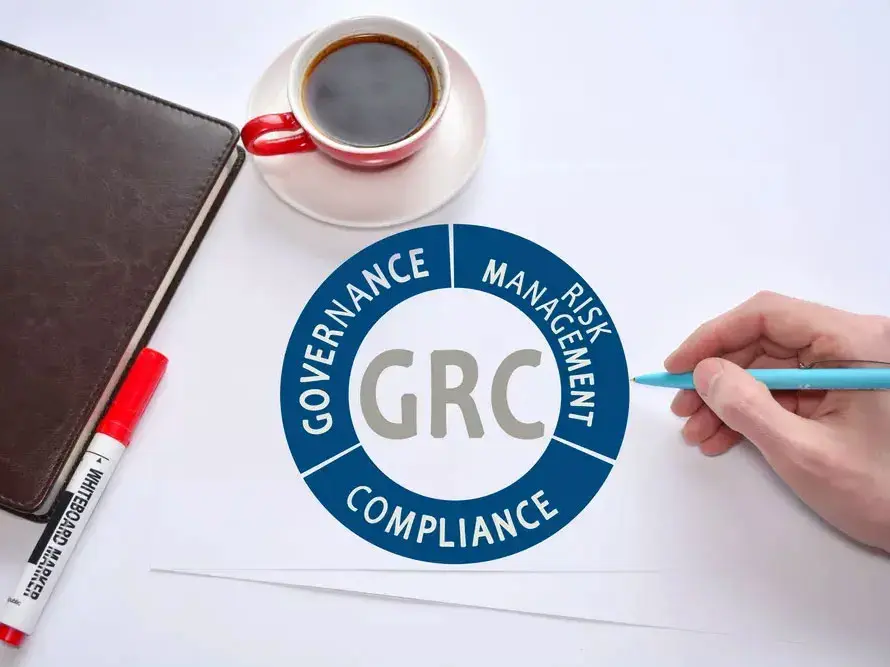Blog
7 Best Practices for Governance, Risk, and Compliance in SAP Security
October 10, 2023
October 10, 2023
Any business faces risks and regulations, and proper governance is a requisite. Software has taken center stage in the contest to manage risks. Because leading enterprises rely on SAP software, it goes without saying that SAP security matters. To this end, industry-tested best practices address governance, risk management, and compliance (GRC) to protect both software and data.
Sound practices start with clearly established policies, then navigate the rules and risks of business technology. We’re not talking about a one-and-done process; rather, it’s an ongoing commitment that should be monitored. Certain tools and techniques can help secure your system, including data encryption and access control.
Even with the best policies and resources, it’s possible for incidents to occur. So, it makes sense to have an incident response plan. Also, the more knowledge employees have on GRC practices, the better your SAP security.

Source: Shutterstock
A trusted technology partner like Approyo can support all aspects of governance and compliance. Mitigating risks will improve customer confidence while minimizing the likelihood of data breaches and fines. The regulatory landscape and the behaviors of criminals keep evolving, so it’s important to stay on top of GRC.
A well-designed risk management strategy bolsters your company’s ethical and operational excellence. It also cuts costs in the long term and supports agility. Approyo’s adaptable GRC services are tailored for SAP security. Through this program, you can acquire software licenses, receive support and maintenance, and have experts on hand for project management and employee education.
It’s a comprehensive solution for the entire life cycle of governance, risk management, and compliance. From planning and implementation through to upgrades, you’ll have the confidence of knowing that the managed services work securely.
The GRC structure lets organizations handle many of the common challenges they’ll encounter. The idea is to isolate and respond to risks early. Each part of governance, risk management, and regulatory compliance contributes to triumph with reliable SAP security. In this age of growing online threats, every company should have a GRC strategy.
Use these GRC best practices to maintain SAP security and minimize your losses:
Appropriate policies determine who can do what in your SAP system. This forms the basis for defending data and reducing risk. Only with a precise understanding of what your organization is aiming for can governance take place.
It’s especially important to have policies regarding access control and authorization. These rules limit which individuals can log in and use company resources. Data encryption procedures further strengthen your control over who can see sensitive information. In case a breach or other violation does occur, there should be policies describing how to respond to the incident.
After establishing policies, it’s time to perform a risk evaluation of your SAP system. This process analyzes the configuration of your environment to identify and measure potential issues. What are the probability and costs of a bad actor gaining unauthorized access? The answer will depend on which account is hacked, how your system is set up, and so on.
Other risks to assess include data breaches, system failures, and falling out of regulatory compliance. Of course, the chance of these happening varies considerably, as does the impact on SAP security.
For instance, a major data breach at a financial institution could expose them to fines and lawsuits, among other problems. But a single machine failing on a factory floor may only cause a small amount of downtime. So, conduct the risk assessment according to your unique situation.
The numerous regulations pertaining to information systems require you to stay on top of compliance. This means regularly checking that your procedures adhere to the relevant obligations. Say a law requires your company to maintain transaction data for a certain period and then discard it properly. You must ensure that the data stays within your system for that amount of time, then gets disposed of correctly.
In addition to data privacy and security, monitor your systems’ compliance with digital security legislation. Lapses in this area can expose you to substantial fines and other penalties, in addition to the direct risks for SAP security. For example, if a medical company doesn’t encrypt protected health information, it could face legal challenges and expose customer data.
Data encryption conceals sensitive information from prying eyes. It’s an added layer of protection should someone steal your data. Encrypting data is one of the most important ways IT teams comply with privacy laws and achieve SAP security.
These days, practically any mission-critical data should be encrypted. Whether a company has employee records, architectural drafts, sales forecasts, or other private documents, only approved users should have access.
What’s more, business data should be encrypted both in the database and while in transit. SAP software natively supports enterprise-grade encryption.
Another best practice with ample support in SAP software is access control. This technique filters users so that people can only read, write, or execute resources that they’re permitted to access. It’s like having doors and locks for your data. But with modern access control, there are more sophisticated variants that can authenticate users through multiple technologies and organize access by roles.
Suppose you have market research that only managers within one department should see. Those managers can be assigned to a role (i.e., a group) and granted access. But employees in other departments can’t see the data, nor can people outside the organization.
Regularly review the access control system to make sure it works as expected even after organizational change.
All the above steps should reduce problems, but companies today face unpredictable risks. Since you can’t eliminate risk entirely, develop an incident response plan. This details how your team will react in the event of a successful attack.
In the plan, describe the steps for reporting incidents and assessing impact. Also, include the steps necessary to return to regular operating conditions. Familiarize employees with the incident response plan ahead of time so they can respond calmly and confidently to any disasters.
Employees should learn more than just the incident response plan. Education is a core element of SAP security. When individuals use the system responsibly, there’s less risk of a data breach. After all, some hacks exploit untrained employees. But regardless of the cause, it’s safer for the company to have digitally aware staff.
SAP security can be complex, and the costs of failure are high. That’s why more and more enterprises turn to managed security solutions. Having dedicated IT experts available will reinforce even the most educated personnel. The SAP-certified professionals at Approyo also deliver 24/7 monitoring to accelerate the detection and response to threats.

Source: Shutterstock
Approyo applies best practices that provide industry-leading security, and our tactics are trusted by hundreds of successful organizations. From exacting policies to vulnerability assessment and monitoring, managed security brings both comfort and cost savings. Don’t take unnecessary risks when you can have unbeatable governance, risk management, and regulatory compliance.
Contact Approyo now for a free SAP security consultation.
You can also learn more about effective GRC controls in Mastering SAP: Protecting Your SAP Environment in Today’s Cybersecurity World.